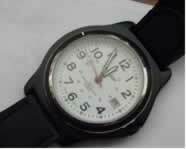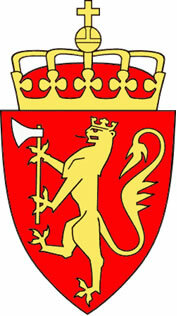Can you imagine what life was like without the watch as we know it today? And without any other modern instrument to show the time? It's really hard to think about that possibility, as people's lives are ruled by time, all the time! We have time to get up, to work, to study, to have meals, leisure, often even the minutes are counted.
Marking the time to carry out tasks is an ancient necessity of humanity, initially it was only possible to mark “the day” and “the night” in a very rudimentary way. One of the first instruments used to know the time of day was “the wooden stick”, which, placed in the sun, cast its shadow in different positions as time passed, this method gave a vague idea of the time, but it could not be used for night. Thus, other instruments emerged that could keep track of time, both day and night, such as the "hourglass" or "sand clock", which consisted of two parts hollow glass and joined by a small hole through which the sand ran from one side to the other, marking a time interval that could be “half” or “one” hour. In ancient civilizations, Greeks and Romans used the time span between “rise” and “sunset” to indicate the time.
Over the years it became necessary to find a way to unify the “time” so that it could be used by everyone anywhere in the world, so we evolved to the first watches. It was established, through a convention, that 1 hour would be divided into minutes and would amount to 60 minutes, and that each minute would be divided into seconds, equivalent to 60. As we can see, the “hour” is a unit of measure of time, with this data it is possible to check how many hours there are in a day, in a week, in a month or in a year and so on. The table below is not to forget and also to learn the correct way to abbreviate the words: hour, minute and second.
| 1 hour (h) | 60 minutes (min) |
| 1 minute (min) | 60 seconds(s) |
Now that we've talked a little bit about the hours, let's learn how to say them in Spanish. The convention, which we spoke of a moment ago, is the same in any language; what can vary with regard to the name of the numbers and some expressions typical of the language. To make it easier, we will use the abbreviations already learned in the examples:
1. In Spanish, you ask: “¿Qué hora es?” and in Portuguese “What time is it?”.
2. In Spanish, the singular article “there” to refer to “one” hour and from two hours onwards use “la”. Examples:
a) Is there one and diez.
It is ten minutes past one.
b) Son la three and twenty.
It's twenty past three.
3. Go back to the previous example and notice that the letter used for the “e” in Portuguese, in Spanish, was the “y”.
4. Now think about the numbers: 12, 3, 6 and 9 on any clock. Between these numbers there is a time span of 15 min (counted every five). In Spanish, these 15 minutes are called “un cuarto de hora” or simply “un cuarto”. See how it's used:
a) Son las dos y room.
It's a quarter past two.
5. If we add more “15 min” we will have a total of “30 min” which is equivalent to “dos quartos”, or “average” hour.
a) It is one and average.
It's half past one.
b) Son las ocho y average.
It's half past eight.
6. When the hour is whole, that is, the larger hand of the clock is at number 12 and the smaller hand at any number, there is an expression in Spanish called “en punto”, but it is not mandatory. use.
a) Son las cuatro en point.
It's four o'clock sharp.
7. When the largest hand of the watch exceeds the number 6, it means that there are “certain” minutes to complete “a certain” hour. See the example in the figure below, there are 5 minutes to 12:00 or noon. In Spanish we use the word “minus” instead of the word “para”, in addition, the hour comes first and then the number of minutes left. In Portuguese it's the opposite, first comes the remaining minutes and then the hour. See the examples:
a) Son las candy any less five.
are five for noon.

8. As in Portuguese, in Spanish 24h is also used to mark the hours after noon. Below we put a table that serves to remember the equivalence between them.
a) Son las fourteen hours.
They are fourteen hours.
1:00 pm |
One hour |
2:00 pm |
Two hours |
3:00 pm |
Three hours |
4:00 pm |
Four o'clock |
5:00 pm |
Five o'clock |
18:00 |
Six hours |
7:00 pm |
Seven o'clock |
8:00 pm |
Eight o'clock |
9:00 pm |
Nine o'clock |
10:00 pm |
Ten hours |
23:00 |
Eleven o'clock |
24:00 |
Twelve hours |
It is now possible to understand how we say the time in Spanish, but it is important that you also know how to speak the numbers. Look at the other examples and practice a lot.
| Spanish | Portuguese | hours |
It's one and five. |
It is five minutes past one. |
1:05 am |
Son las ocho y room. |
It is a quarter past eight. |
8:15 am |
Son las nueve y veinticinco. |
It's nine twenty-five. | 9:25 am |
Son las five and average. |
It's five-thirty. | 5:30 am |
Son las once minus twenty. |
It's twenty to eleven. | 10:40 am |
Son las dos less room. |
It's a quarter to two. | 1:45 am |
Son las tres less diez. |
It's ten minutes to three. | 02h50min |
Son las dieciocho hours. |
It's eighteen o'clock. | 18:00 |
They are twenty-one hours and ten minutes. |
It's twenty-one hours and ten minutes. | 9:10 pm |
Rosana Beatriz Garrasini Sellanes
Brazil School Collaborator
Degree in Letters – Portuguese and Spanish by the Catholic University of Goiás – PUC/GO
Spanish - Brazil School
Source: Brazil School - https://brasilescola.uol.com.br/espanhol/las-horas-en-espanol.htm

